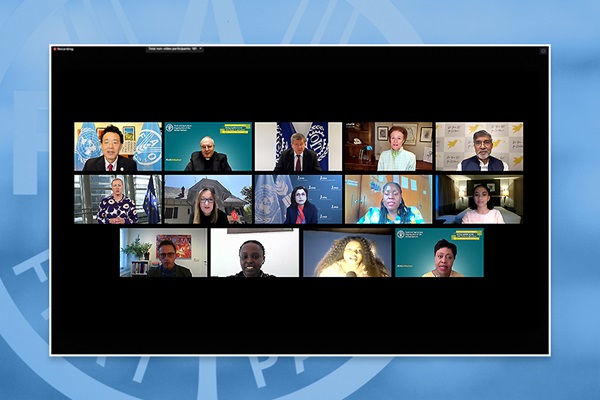
Rome - Ending the scourge of child labour by 2025 will require effective action and strong leadership, the Director-General of the Food and Agriculture Organization (FAO), QU Dongyu, said today at the launch of a two-day virtual forum.
A total of 160 million children worldwide – almost 1 in 10 - are engaged in child labour. About 70 percent of these children (112 million) work in crop production, livestock, forestry, fisheries and aquaculture, according to the latest data available.
Child labour is generally defined as work that deprives children of their childhood, their potential and their dignity, and is harmful to their physical and mental development. It is a serious violation of human rights, yet many vulnerable families have no choice. Though not all work carried out by children is considered child labour, much of it is not age-appropriate and is likely to be dangerous or interfere with children’s education. A child working in fields where pesticides have been applied, staying up all night on a fishing boat, or carrying loads so heavy that they harm the development of the child's body – are common examples of hazardous work.
Some of the key factors that contribute to child labour in rural areas are low family incomes, few livelihood alternatives, limited access to education, inadequate labour-saving technologies, traditional attitudes towards children’s participation in agriculture and limited labour law enforcement. The COVID-19 pandemic has had devastating effects on the livelihoods of small-scale farmers, especially in rural areas, increasing the risk of many children falling into child labour.
Eliminating child labour by 2025 is the declared aim of Target 8.7 of the United Nations' Sustainable Development Goals (SDG).
But with only four agricultural seasons left to reach the target, effective action and “strong and coherent leadership from agri-food stakeholders across the globe is critical to achieve SDG target 8.7,” QU said in his opening address to the Global Solutions Forum: Acting Together to End Child Labour in Agriculture.
The Forum
The Global Solutions Forum, which runs until Nov. 3, is organized by FAO in close collaboration with the International Labour Organization (ILO), together with the International Partnership for Cooperation on Child Labour in Agriculture (IPCCLA) and Alliance 8.7.
Its aim is to mobilize global action and identify and expand concrete solutions to eradicate child labour in agriculture.
Participants heard from Pope Francis, who in a message delivered on his behalf by Monsignor Fernando Chica Arellano, Ambassador and Permanent Representative of the Holy See, said “protecting children means decisive measures to support smallholder farmers, so that they are not obliged to send their children into the fields in order to increase their incomes, which, being so low, do not allow vulnerable farming families to maintain their households with dignity.”
Guy Ryder, Director General of the International Labour Organization, said in his opening remarks that child labour was not inevitable.
“Child labour is not an escape road from poverty, it actually prolongs poverty; it makes poverty intergenerational. We have to help people out of this vicious circle of poverty and that’s not an easy task,” Ryder said.
Henrietta Fore, Executive Director of UNICEF, said some of the solutions involve providing income support for vulnerable incomes, better health care and education, expanding birth registration, and social and child protection.
“If we want to make a difference in ending child labour, this is where we need to focus significant efforts: in rural areas, with families, where agriculture is an important source of livelihoods,” Fore said.
Also delivering opening remarks was Kailash Satyarthi, an Indian social reformer whose campaign against child labour made him the co-recipient in 2014 of the Nobel Peace Prize, along with Malala Yousafzai.
“Nothing is as brutal as the death of a child’s dream,” Satyarthi said of the impact of child labour. “We should feel the moral responsibility that we have to fulfil the dreams of these children.”
The online event is organized in the context of the International Year for the Elimination of Child Labour and brings together representatives of ministries of agriculture, fisheries, livestock and forestry, producers and farmers' organizations, workers' organizations, development banks, businesses, civil society and academia, children, youth advocates, and former child labourers, among others.
FAO is already promoting efforts to boost the incomes of rural families so that they have the means to send their children to school rather than work. Examples of FAO’s contributions include:
“It is critical that we support our young people, especially the rural youth, to prepare for their future through relevant education and skills development, and to provide them with decent youth employment opportunities,” Qu said.